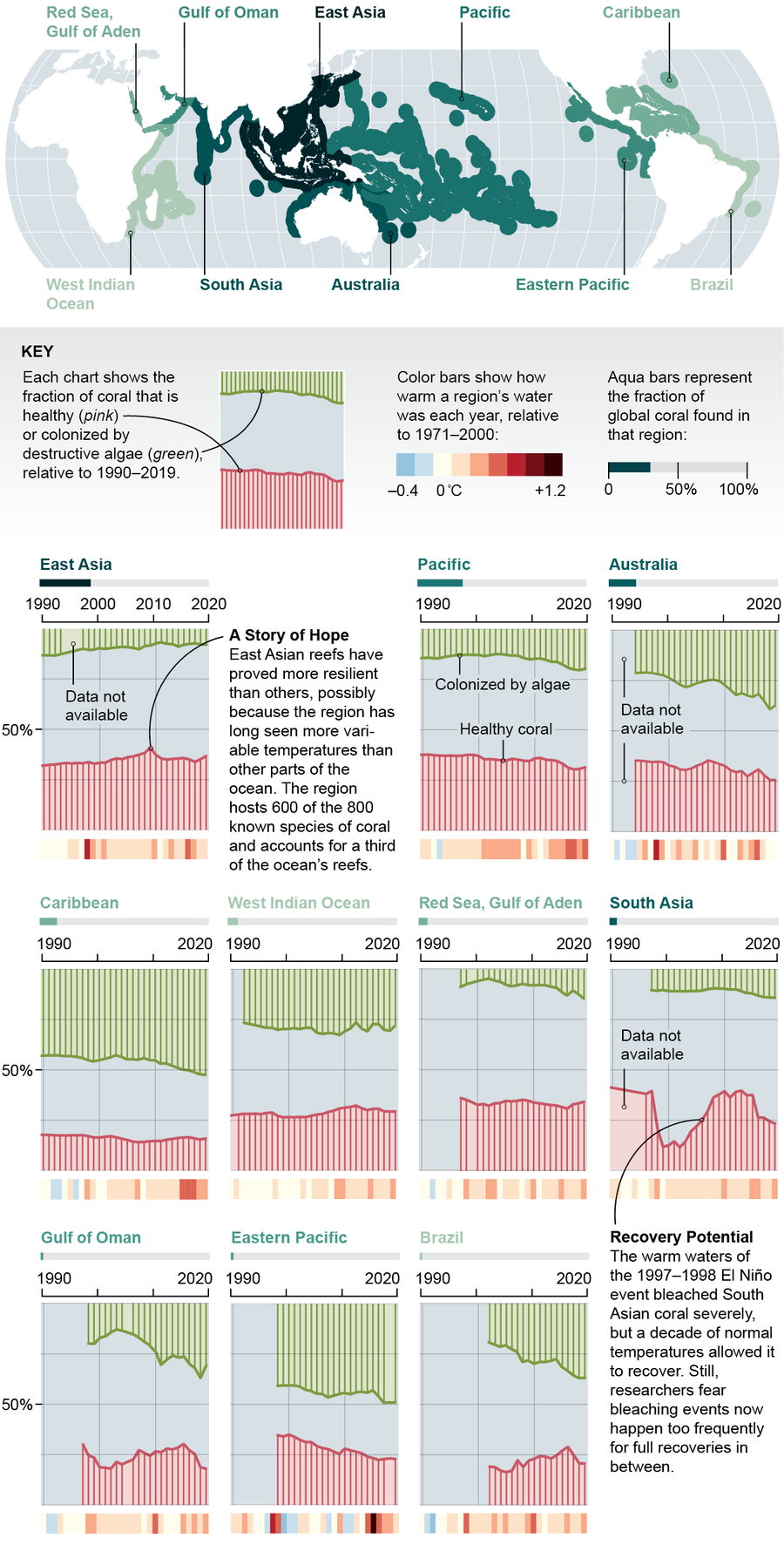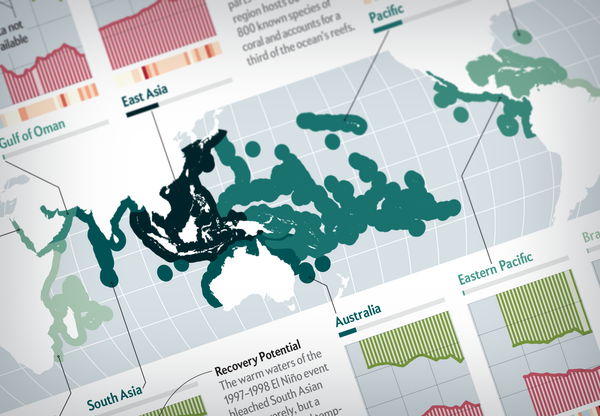On supporting science journalism
If you're enjoying this article, consider supporting our award-winning journalism by subscribing. By purchasing a subscription you are helping to ensure the future of impactful stories about the discoveries and ideas shaping our world today.
The United Nations recently released a sweeping report on the health of the planet’s coral. Healthy reef cover—where squishy polyps and colorful algae coat the white skeletons of hard coral—has dropped 14 percent in the past decade. Coastal development, ocean plastic pollution and overfishing all take their toll, allowing destructive algae to proliferate.
But warming oceans, which bleach coral, are the biggest threat to reefs worldwide. The all too familiar story has a few bright spots, however. Coral rebounded after major bleaching events in 1998 and 2005, showing recovery is possible. And the most biodiverse coral in the world—the so-called Coral Triangle in the western Pacific Ocean—is holding its ground.

Credit: Katie Peek; Sources: “Status of Coral Reefs of the World: 2020,” by ICRI, GCRMN, Australia Institute of Marine Science and UNEP; NOAA (sea-surface temperature data)
